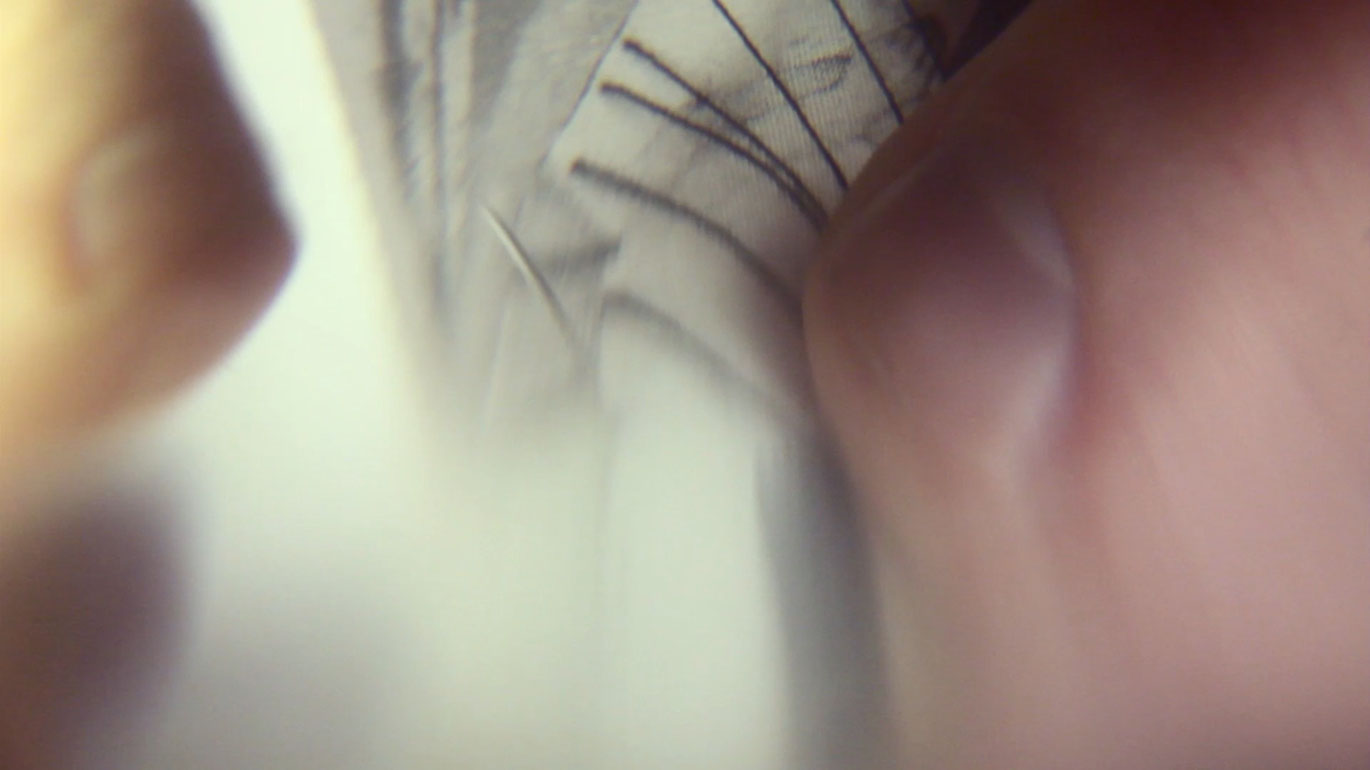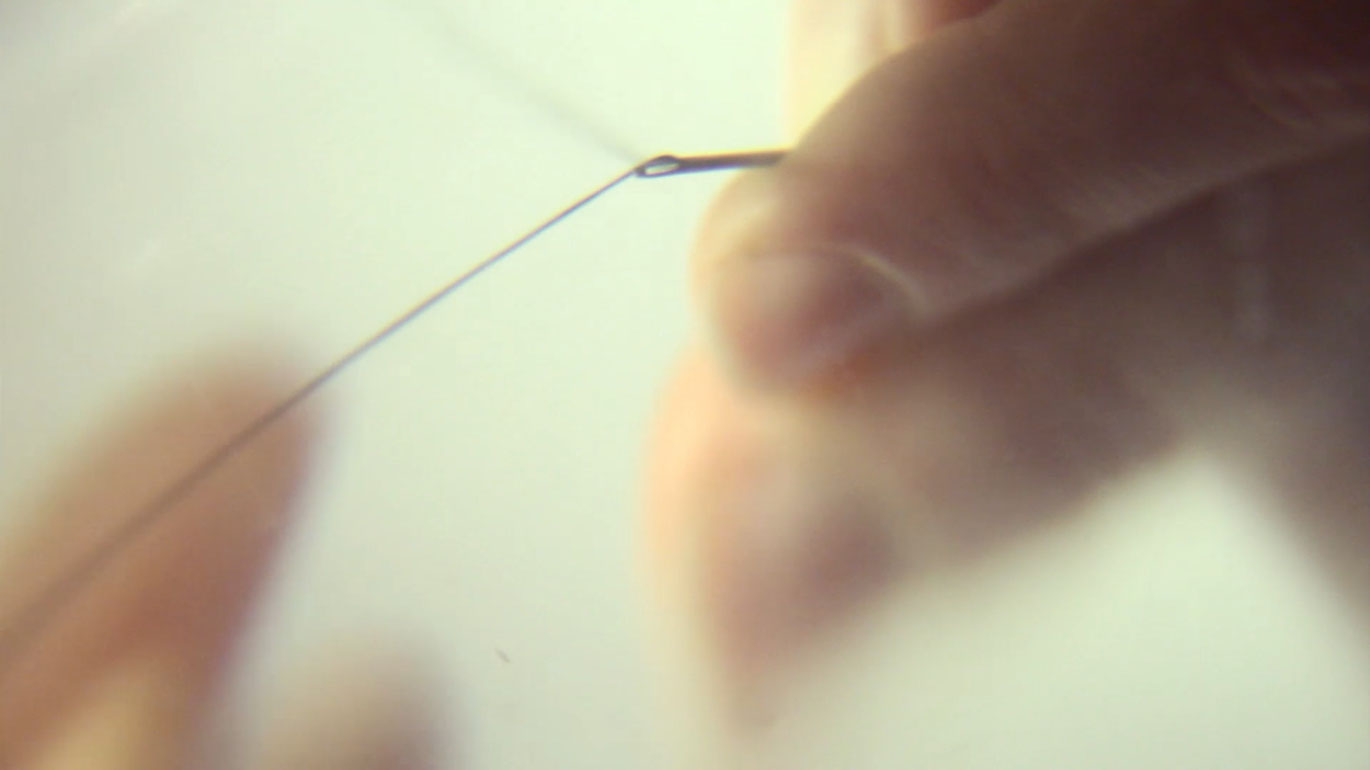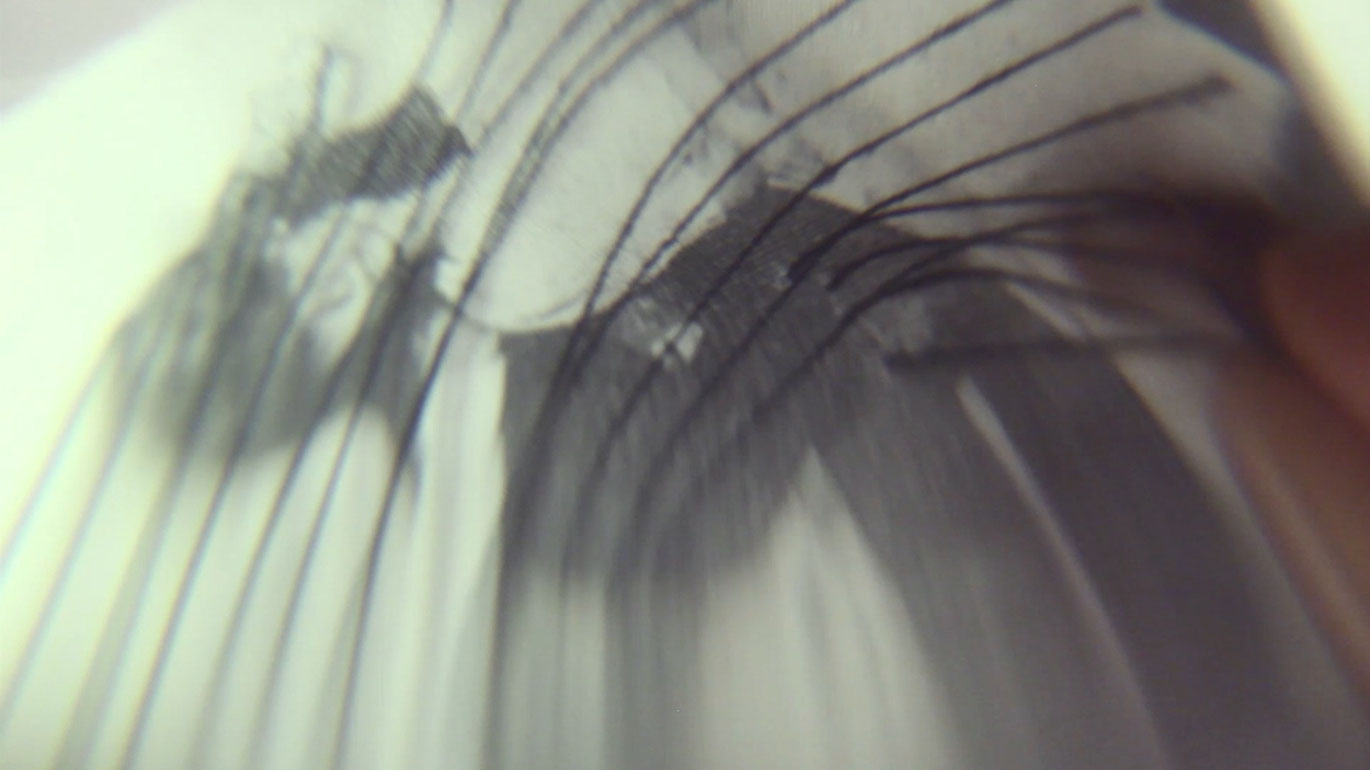Tangled
A needle is threaded to an atmospheric sound of whirring. The thread trembles, the image is strangely distorted. Fingers slave away on a workpiece of ambiguous material. Is it cloth with a black and white imprint? A photograph on paper? The whirring turns into the rattling of a sewing machine, its presence conveyed only by the soundtrack. Threading, stitching and sewing: Hand and machine initially do not work at the same speed – but eventually manual and automated labor rhythmically align. Suddenly the purposeful work comes to an abrupt halt, fingers become entangled in thread and "material", accompanied by the aggressive industrial noise of the machine. A white, opaque surface ultimately remains.
It is an anamorphic image that appears distorted to us, seen through an endoscopic lens. Tangled borrows this techno-scientific imaging process – usually employed by industry, archaeology and primarily medicine – to turn interior and exterior perspectives inside out: The corporeal exterior coincides with the interior emotional state of the sewing subject. But instead of clarifying the situation or delivering a "diagnosis" – to put it into medical terms – our perspective narrows, the image itself resists conveying any rational gain in knowledge. It oscillates between transparency and opacity, and this is precisely how it derives its strength. Because despite how potentially painful the emotional investment may be, or confusing to a frustrated subject striving for clarity, Tangled is a plea for impenetrability, for the inability to understand, pleading also against forcing comprehension at all costs. (Claudia Slanar)
Translation: Eve Heller
Tangled
2017
Austria
6 min



